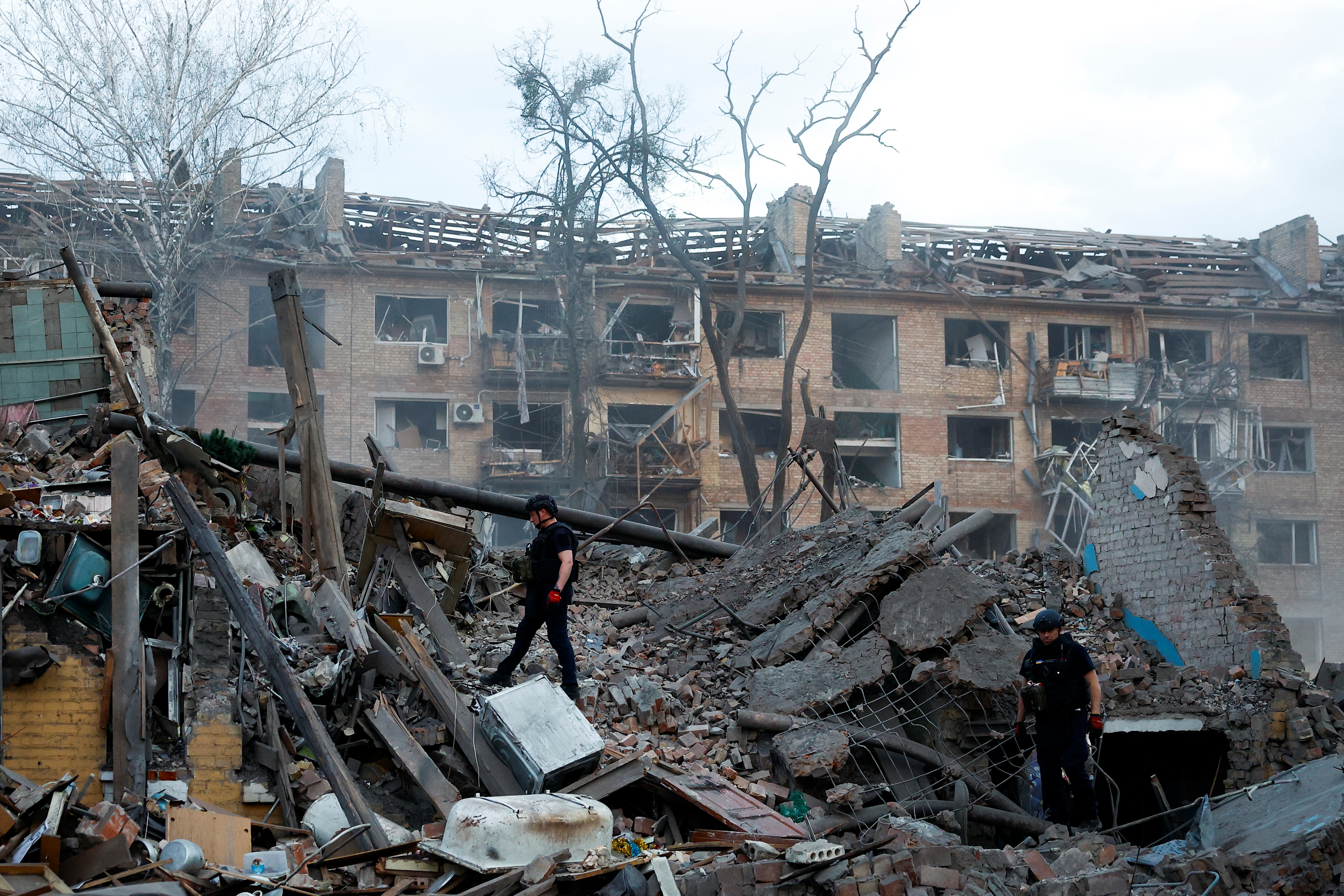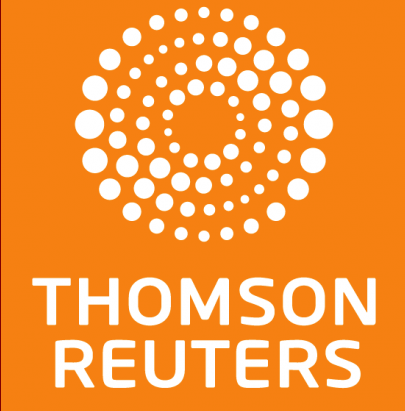Trump is "frustrated" with the pace of talks and that Zelenskiy 'seems to be moving in the wrong direction'
US President Donald Trump and Ukrainian President Volodymyr Zelenskiy clashed again on efforts to end the three-year-old war in Ukraine, with the US leader chiding Zelenskiy for refusing to recognize Russia’s occupation of Crimea.
Trump’s Vice President JD Vance said it was time for Russia and Ukraine to either agree to a US peace proposal “or for the United States to walk away from this process,” echoing a warning from Trump last week.
Speaking to reporters in India, Vance said the proposal called for freezing territorial lines “at some level close to where they are today” and a “long-term diplomatic settlement that hopefully will lead to long-term peace.”
“The only way to really stop the killing is for the armies to both put down their weapons, to freeze this thing,” he said.
A former Western official familiar with the US proposal said it also called for the recognition of Russia’s annexation of Crimea.
Since taking office in January, Trump has upended US policy toward the war in Ukraine, pressing Ukraine to agree to a ceasefire while easing pressure on Russia, which launched a full-scale invasion of its neighbor in 2022.
Zelenskiy on Tuesday reiterated that Ukraine would never cede Crimea to Russia, which seized control of the peninsula in 2014 in a move that was condemned internationally. “There’s nothing to talk about here. This is against our constitution,” he said.
Trump, who argued with Zelenskiy in a disastrous Oval Office meeting in March, called this an inflammatory statement that made peace harder to achieve. He said in a social media post that Crimea was lost years ago “and is not even a point of discussion.”
Zelenskiy acknowledged later in an X post that the London talks among U.S., Ukrainian and European officials were marked by high emotions but expressed hope that future joint work would lead to peace.
He pledged again that Ukraine would abide by its constitution and said he was sure Kyiv’s partners, in particular the United States, “will act in line with its strong decisions.”
He attached to his post a 2018 Crimea Declaration from Mike Pompeo, Trump’s secretary of state during his first term, which said: “The United States rejects Russia’s attempted annexation of Crimea and pledges to maintain this policy until Ukraine’s territorial integrity is restored.”
Trump, who promised during his election campaign to end the war within his first 24 hours back in the White House, scolded Zelenskiy and said on Truth Social the U.S. was trying to stop the killing in Ukraine and that they were “very close to a deal” for peace.
Trump told reporters later he thought the London talks had gone “pretty well,” although he also said, in apparent reference to Russian President Vladimir Putin and Zelenskiy: “We’ve got to get two people, two strong people, two smart people, to agree. And as soon as they agree, the killing will stop.”
US Secretary of State Marco Rubio cancelled his trip to attend the London talks, prompting cancellation of a broader meeting with foreign ministers from Ukraine, Britain, France and Germany and underscoring the gaps between Washington, Kyiv and its European allies over how to end the war.
TRUMP’S ‘PATIENCE IS RUNNING VERY THIN’
White House spokeswoman Karoline Leavitt told reporters Trump is “frustrated” with the pace of talks and that Zelenskiy “seems to be moving in the wrong direction.”
Several sources have said proposals from Trump’s envoy Steve Witkoff include not only recognizing Russia’s annexation of Crimea, but accepting Russia’s control of the 20% of Ukraine’s territory it has gained in the war, ruling out Ukrainian membership of NATO and lifting of Western sanctions.
Trump’s Ukraine envoy Keith Kellogg said on X that there were positive talks in London with Zelenskiy’s chief of staff, Andriy Yermak, and added: “It’s time to move forward on President Trump’s UKR-RU war directive: stop the killing, achieve peace, and put America First.”
Trump raised the pressure on Sunday when he said he hoped Moscow and Kyiv would make a deal this week to end the conflict.
At the heart of Wednesday’s talks was an attempt to establish what Kyiv could possibly accept after Witkoff presented proposals to a similar session in Paris last week. Three diplomats said those proposals appeared to demand more concessions from Ukraine than Russia.
TRUMP ENVOY EXPECTED TO MEET PUTIN ON FRIDAY
Witkoff is expected to meet Putin again on Friday, a U.S. official told Reuters.
Witkoff has already met Putin three times to discuss prospects for an end to the war and will visit Moscow this week for a new round of talks, the White House said earlier.
Since Trump expressed his desire to broker peace in Ukraine and made a surprise call to Putin in February, European nations have scrambled to find ways to support Kyiv against Moscow while keeping the U.S. onside.
A joint statement from Britain, France and Germany after the London talks said all parties had reiterated strong support for Trump’s “commitment to stopping the killing and achieving a just and lasting peace.”
It said “significant progress was made on reaching a common position on next steps” and “all agreed to continue their close coordination and looked forward to further talks soon.”
Where is Crimea and why is it contested?
HISTORY
Crimea, which juts out into the Black Sea off southern Ukraine, was absorbed into the Russian Empire along with most ethnic Ukrainian territory by Catherine the Great in the 18th century. Russia’s Black Sea naval base at Sevastopol was founded soon afterwards.
More than half a million people were killed in the Crimean War of 1853-56 when competing geopolitical powers Russia and the Ottoman Empire, backed by Britain and France, took up arms. The conflict reshaped Europe and paved the way for World War One.
In 1921, the peninsula, then populated mainly by Muslim Tatars, became part of the Soviet Union. The Tatars were deported en masse by Soviet leader Josef Stalin at the end of World War Two for alleged collaboration with the Nazis.
Crimea became part of Russia within the Soviet Union until 1954, when it was handed to Ukraine, also then a Soviet Republic, by Stalin’s successor Nikita Khrushchev, a Ukrainian.
After the collapse of the Soviet Union in 1991, there were periodic political tussles over its status between Moscow and Kyiv before Russia captured Crimea by force in 2014.
RUSSIAN SEIZURE OF CRIMEA
Russia sent forces into Crimea and seized control of the peninsula after Ukraine’s pro-Russian president, Viktor Yanukovych, was ousted during mass protests in February 2014.
After Crimea voted in a disputed referendum to become part of Russia, Russia formally annexed Crimea on March 18, 2014, with Putin saying Crimea has always been and remains an inseparable part of Russia.
The United Nations General Assembly, the United States and many other countries condemned the annexation, and the U.S. and the European Union imposed sanctions on Russia over its moves. Few countries have recognised Crimea as part of the Russian Federation but the Kremlin has said the question has been closed “forever.”
WHAT HAS ZELENSKIY SAID ABOUT CRIMEA?
Ukrainian President Volodymyr Zelenskiy has ruled out ceding territory occupied by Russian forces and has said Ukrainian sovereignty of Crimea must be restored through diplomacy.
MILITARY SIGNIFICANCE
Russia’s Black Sea base in Sevastopol, which was leased from Ukraine, gives Moscow access to the Mediterranean.
Russia has frequently used Crimea as a launchpad for missile and drone attacks on Ukraine since sending tens of thousands of troops into the country on February 24, 2022 in what Putin calls a “special military operation”. Ukrainian forces have also fired missiles at Crimea since Russia’s 2022 invasion.
After its full-scale invasion in 2022, Russia enforced a de facto blockade of Ukraine’s Black Sea ports which severely restricted grain exports that had been vital to Kyiv’s pre-war economy. This resulted in a rise in world food prices and the threat of famine in lower-income countries. A deal known as the Black Sea Grain Initiative was reached in July 2022 to allow safe passage from certain ports but it later collapsed.
GEOGRAPHY
The mountainous peninsula is attached to the rest of Ukraine by a narrow strip of land in the north. To the east, it is separated from Russia by the narrow Kerch Strait. A bridge built by Russia across the strait has been damaged during the war.
With an area of 27,000 sq km (10,000 sq miles), Crimea is slightly smaller than Belgium, with the city of Simferopol as its capital.
POPULATION
The pre-war population was around 2 million. Ukraine’s 2001 census showed around 58% were ethnic Russian, 24% ethnic Ukrainian and 12% Tatars.
ECONOMY
Crimea’s temperate climate made it a popular tourist destination for Ukrainians and Russians before the Russia-Ukraine war, especially Yalta, where the Soviet, U.S. and British victors of World War Two met in 1945 to discuss the future shape of Europe.
Before the 2022 invasion, it accounted for 3% of Ukraine’s gross domestic product. Wheat, corn and sunflowers are the main crops.
Crimea has chemical processing plants and iron ore is mined in Kerch in eastern Crimea. Ukraine has two grain terminals in Crimea – in Kerch and in Sevastopol.







Click here to change your cookie preferences